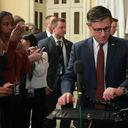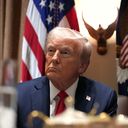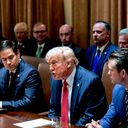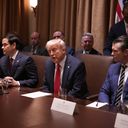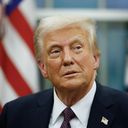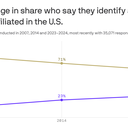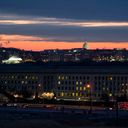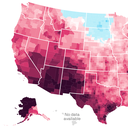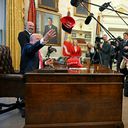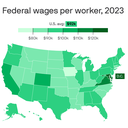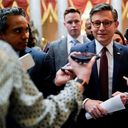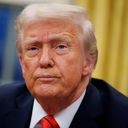Mike Johnson eyes solo approach to avoid government shutdown
House Speaker Mike Johnson (R-La.) won a game of brinksmanship with his own party on budget reconciliation. Now he's prepared to do the same with Democrats on government funding, lawmakers and aides tell us.
Why it matters: House Republicans are increasingly confident they can avoid a government shutdown without any Democratic support.
- "I think it demonstrated we can do things on our own," House Appropriations Chair Tom Cole (R-Okla.) told reporters on Wednesday.
- Going alone would be unprecedented but not impossible. The current funding bill runs through March 14.
🙏 Johnson will need strong buy-in from the White House that President Trump will back his approach.
- After a White House meeting Wednesday, Johnson said a spending stopgap is "becoming inevitable."
Between the lines: The appropriation process has been complicated by Elon Musk's and DOGE's efforts to cut money that Congress has obligated to departments and agencies.
- That's caused a Democratic uproar and raised the possibility they won't give Republicans the votes they could need to keep the government open.
- But Johnson said Wednesday that Republicans shouldn't expect to get DOGE cuts written into a spending stopgap.
- The speaker told reporters the "most reasonable" thing is to avoid a shutdown by pursuing a "clean" CR.
Zoom in: House and Senate GOP leaders met with their appropriators Wednesday morning to discuss their next steps.
- Republicans are united, for now, on a single point: they will not give in to Democratic demands to block Musk's cost-cutting efforts.
- "The Democrats have had completely unreasonable conditions assigned to this," Johnson said. "They want us to limit the power of the executive branch."
- "That's a no-go," Cole said. "We're not moving."
- "The Democrats need to be working with us on a realistic basis," Sen. John Hoeven (R-N.D.) told Axios.
The bottom line: Republicans will need some eight Democratic votes in the Senate to break a filibuster and pass a government funding bill.
- In the House, they have always relied on Democratic votes to fund the government.
- House Republicans passing a funding bill without Democratic help is unprecedented but not impossible.
